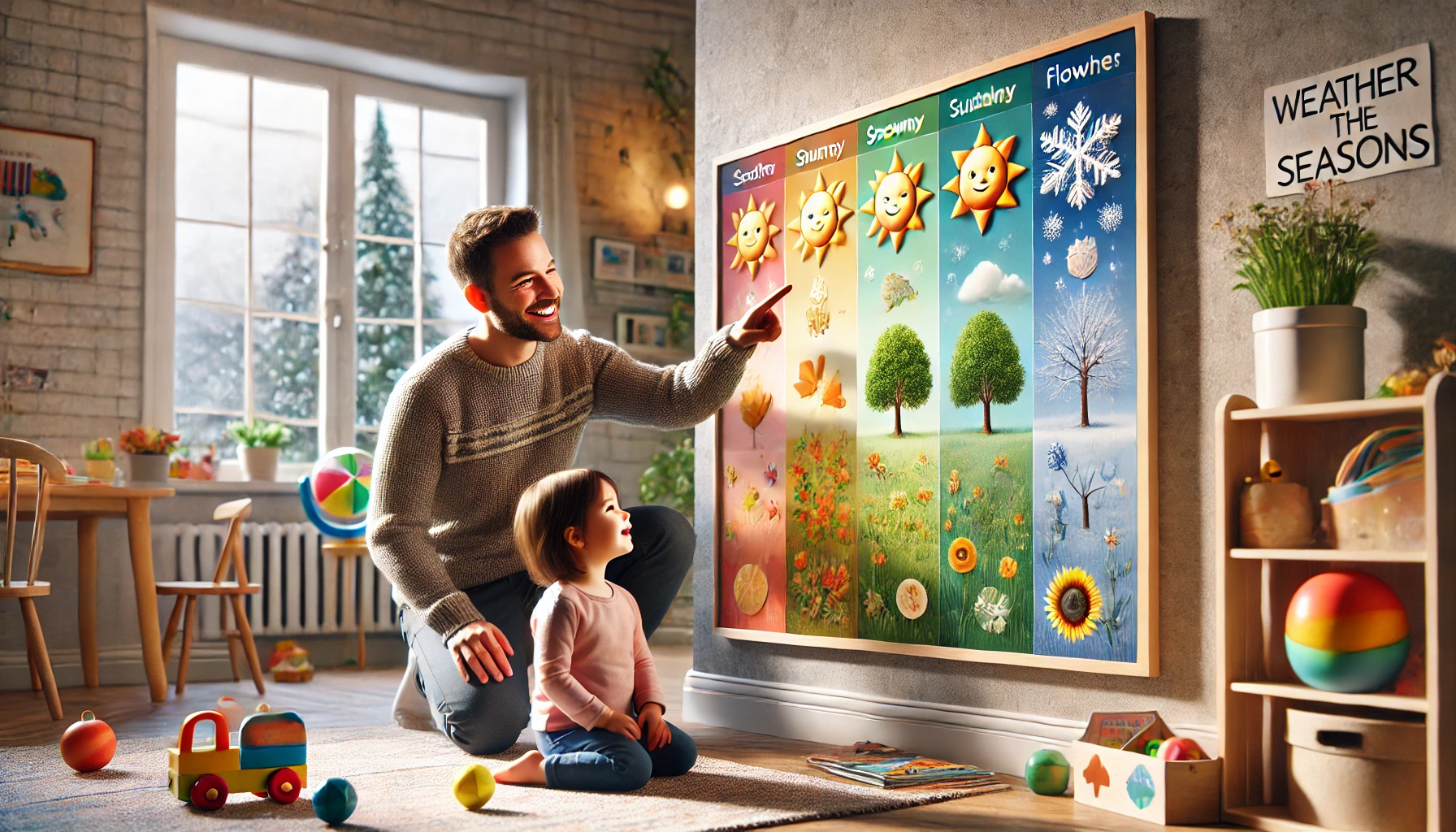Understanding time and the changing seasons is an important part of a child’s cognitive development. Although abstract concepts like hours, days, and months can be tricky at first, young children can begin to grasp them through playful activities, hands-on experiences, and visual routines.
By connecting these concepts to their daily lives—like bedtime, snack time, sunny days, or falling leaves—kids can learn to make sense of time in a way that’s fun and natural.
Here’s how you can teach your child about time and seasons while keeping it engaging, interactive, and full of wonder.
Why Teaching Time and Seasons Matters
Even in early childhood, understanding time helps kids:
- Develop routines and structure
- Build memory and sequencing skills
- Learn cause and effect
- Understand change in the world around them
Learning about seasons also helps them notice patterns in nature and build a sense of connection with their environment.
Start with the Basics: Daily Time Concepts
1. Use Daily Routines to Teach Time
Young children don’t need to read clocks to understand time. Use routines like:
- Morning: brushing teeth, getting dressed
- Afternoon: lunch, quiet time, play
- Evening: dinner, bath, story time, bedtime
👉 Create a visual schedule with pictures to help your child understand what happens first, next, and last.
You can also use terms like:
- “After breakfast, we’ll read a story.”
- “Before bedtime, let’s take a bath.”
2. Introduce Vocabulary for Time
Use simple and consistent words like:
- Now / Later
- Yesterday / Today / Tomorrow
- Morning / Afternoon / Night
- Soon / In a little while
Repetition and daily use will help these terms become part of your child’s vocabulary.
3. Make a “Time of Day” Chart
Create a chart with four parts: morning, afternoon, evening, and night. Add pictures of your child doing daily tasks in each part of the day.
This helps them connect time to real-life experiences and builds awareness of how the day flows.
Teach the Days of the Week and Months
4. Use Songs and Rhymes
Children love music! Use classic songs like:
- “Days of the Week” (to the Addams Family tune)
- “There Are 12 Months in a Year”
Sing these songs during daily routines or playtime to reinforce the order of days and months.
5. Create a Daily Calendar Routine
Each morning, check the calendar together and talk about:
- The day of the week
- The date
- The weather
- What’s planned for the day
Let your child move the calendar pieces and say the words aloud. Over time, this builds memory and a sense of time passing.
Exploring the Seasons with Children
6. Teach Through Observation
Help your child notice what changes with the seasons:
- Weather (hot, cold, rainy, snowy)
- Clothes we wear
- Foods we eat
- Activities we do
- Changes in nature (leaves falling, flowers blooming)
Take walks and ask questions like:
- “What do you see today that tells you it’s fall?”
- “How does the air feel in winter?”
7. Create a Seasonal Display
Dedicate a small table or corner in your home to reflect the current season. Include:
- Leaves, flowers, or branches from nature
- Seasonal books or toys
- A small calendar or weather chart
- Drawings your child makes about the season
This visual space keeps your child connected to nature and the passing of time.
8. Make Crafts for Each Season
Crafts help reinforce what your child is learning. Try ideas like:
- Spring: Flower painting or raindrop mobiles
- Summer: Sun collages and ice cream crafts
- Fall: Leaf rubbings or apple stamping
- Winter: Snowflake cutouts or mitten decorating
As you create, talk about what makes each season special.
9. Bake Seasonal Recipes
Cooking together is another way to explore time and seasons:
- Spring: Fruit smoothies or carrot muffins
- Summer: Popsicles or fresh salads
- Fall: Pumpkin bread or apple pie
- Winter: Hot cocoa or cinnamon cookies
Connect foods to the seasons and talk about what ingredients are available during each time of year.
Reinforce Concepts with Books and Play
10. Read Books About Time and Seasons
Books are a great way to deepen understanding. Look for titles like:
- The Very Hungry Caterpillar by Eric Carle (days of the week)
- A Busy Year by Leo Lionni (changing seasons)
- All Through My Town by Jean Reidy (daily routines)
After reading, ask questions like:
- “What did the character do in the morning?”
- “How did the story show it was winter?”
11. Use Toys and Games
Try:
- Wooden or magnetic calendars
- Weather wheels
- Dress-the-bear games (for different weather)
- Story sequencing cards
- Pretend play about different seasons (e.g., building a pretend snowman inside!)
Learning through play helps kids internalize these abstract concepts.
Final Thoughts: Learning Time Through Life
Teaching children about time and the seasons doesn’t need to be a formal lesson—it can be woven into your everyday life. Through songs, stories, crafts, and connection with nature, you help your child build an understanding of how the world changes and how they fit into it.
As they begin to notice patterns in their days and the world around them, their confidence grows. And with your support, they’ll soon be telling you what day it is—or reminding you that summer is coming!
